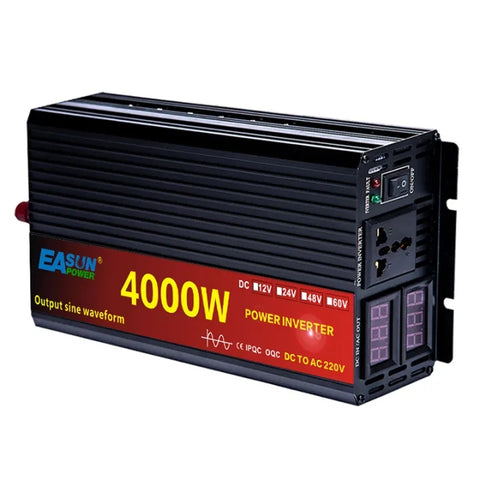In today's fast-paced world, understanding how to maximize the use of your car inverter is essential for anyone who relies on electronic devices while on the road. A car inverter converts your vehicle's DC power into AC power, allowing you to charge or power various devices. This guide will help you choose the right car inverter and use it effectively.

Understanding Car Inverters
Car inverters come in various shapes and sizes, each designed to meet different power needs. They are typically categorized by their wattage capacity, which determines how much power they can deliver. When selecting an inverter, consider the following:
- Wattage Requirements: Assess the total wattage of the devices you plan to use. This will help you choose an inverter that can handle the load.
- Type of Inverter: There are two main types: modified sine wave and pure sine wave. Pure sine wave inverters are more efficient and suitable for sensitive electronics.
- Portability: If you plan to travel frequently, consider a lightweight and compact inverter for easy transport.
How to Maximize the Use of Your Car Inverter
To ensure you are getting the most out of your car inverter, follow these tips:
- Know Your Devices: Understand the power requirements of your devices. This knowledge will help you avoid overloading the inverter.
- Use Quality Cables: Invest in high-quality cables to reduce power loss and improve efficiency.
- Monitor Temperature: Ensure your inverter is well-ventilated to prevent overheating, which can lead to failure.
- Utilize Battery Power Wisely: If you are using the inverter while the engine is off, be mindful of your car battery's capacity to avoid draining it.
Safety Considerations
When using a car inverter, safety should always be a priority. Here are some essential safety tips:
- Check Compatibility: Ensure that your inverter is compatible with your vehicle's electrical system.
- Avoid Overloading: Never exceed the inverter's wattage limit to prevent damage to both the inverter and your devices.
- Regular Maintenance: Periodically check your inverter for any signs of wear or damage.
Conclusion
Choosing the right car inverter and understanding how to maximize the use of your car inverter can significantly enhance your travel experience. By following the guidelines outlined in this article, you can ensure that your devices remain powered and functional on the go. For more tips on efficiency and safety, visit this link.







